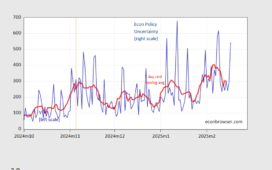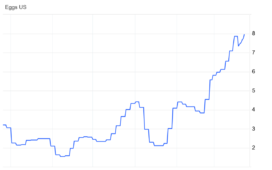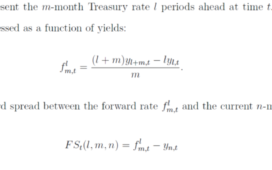Yves here. This post give a fine recap of the considerable health problems created by industrial animal farming in the US, including the impact on human water supplies. However, I’m disappointed to see the nod to lab grown meat. I have difficulty seeing this as anything other than another type of highly/ultraprocessed food. High poultry and meat prices will eventually force Americans to treat these animal proteins much the way they are in Asian cooking: used sparingly, with starch (rice) and vegetables providing the bulk of calories. Adults need only 45g to 55g a day, depending on bodyweight. To put this in context, 100g, or less than 1/4 pound of chicken has 27g of protein; 100 g cooked of beef comes in at about 35g of protein.
And of course, there are good vegetarian sources if you are attentive to making sure to get balanced proteins. The point is the US/advanced economy addiction to animal proteins is unhealthy and we would do better by consuming less (as opposed to, IMHO, consuming fabricated substances where the long-term effect of regular consumption is unknown).
By Naman Shah, M.D., Ph.D., is director of medical and dental affairs at the Los Angeles County Department of Public Health, a Paul and Daisy Soros Fellow, and a Public Voices Fellow of the OpEd Project. The views expressed are his own. Originally published at Undark
As Robert F. Kennedy Jr. awaits the outcome of his Senate confirmation for Health and Human Services Secretary — which is slated for today — bird flu is ravaging American farms. As of Wednesday, nearly 158 million chickens, ducks, turkeys, and other poultry affected by the virus have died or been culled. Spillover to dairy cows was also confirmed for the first time last spring, and herds in 16 states are now affected. As farm workers fall ill and the virus adapts in ways that may allow it to spread more efficiently, public health departments — like the one in Los Angeles County, where I work to control infectious disease emergencies — are preparing for another pandemic.
This crisis isn’t a surprise to physicians and veterinarians. In recent decades, as animal and human interactions have increased, more than 75 percent of new human pathogens globally have originated in animals. I’ve studied animal-to-human diseases for many years and recognize that the $250 billion animal farming industry in the U.S., where an estimated 99 percent of farmed animals are from factory farms, has created perfect conditions for disease emergence.
A handful of large corporations control most of our meat and dairy production, enriching themselves while harming American farmers and consumers alike. U.S. taxpayers subsidize these industrial operations to the tune of an estimated $38 billion annually (according to the 2013 book “Meatonomics” by David Robinson Simon), which distorts prices, hinders competition from healthier alternatives, and harms our health.
I also know we have a choice to use our technology, policies, and entrepreneurial spirit to build a food system that’s better for everyone. With its stated goal of better health through changing diets, removing toxins, and using market solutions, the Make America Healthy Again platform promoted by RFK Jr. and President Trump aligns with the need to transform animal agriculture. And while RFK Jr. has championed sustainable and regenerative farming practices, the new administration should direct more specific efforts in this area.
First, we must understand that modern animal farming drives more deforestation than all other agricultural commodities combined, pushing livestock closer to wildlife carrying new illnesses. Inside farms, thousands of stressed animals with weakened immune systems are packed together in conditions ideal for germs to spread and mutate. Although California’s Proposition 12 now requires a minimum amount of space for farm animals to move, these modest improvements aren’t enough to prevent disease transmission.
The scale is staggering. To contain an outbreak, millions of animals must be screened, treated, and quarantined within days. And while advances in animal health technology continue, they can’t overcome basic economics. Farm owners and workers, dependent on farming for their livelihoods, may resist necessary but costly health measures; as a case in point, some owners are refusing bird flu testing for their livestock, even when compensation is available.
Second, animal farms are breeding grounds for antibiotic-resistant superbugs. Drug-resistant infections contributed to nearly 5 million deaths in 2019, and the World Health Organization warns that this crisis is accelerating. According to data from the Food and Drug Administration, about 66 percent of medically important antibiotics in the U.S. are used in livestock, often in healthy animals. Even pioneering rules to prevent antibiotic misuse have fallen short. California’s Livestock: Use of Antimicrobial Drugs law, implemented in 2018 and among the strongest in the nation, banned routine preventive antibiotic use and required veterinary oversight. Yet state reports show continued high usage, inadequate monitoring, and poor compliance with data sharing requirements.
Third, animal farming pollutes our surroundings. The Environmental Protection Agency has documented how these operations can release dangerous levels of ammonia, methane, and particulate matter into the air, and the Centers for Disease Control and Prevention notes drinking and surface water sources contaminated with nitrates, phosphorus, and hormones. Studies have linked proximity to industrial farms with higher rates of asthma symptoms, gastrointestinal illnesses, and other health conditions, particularly in low-income and rural communities. And let’s not forget all the food recalls due to contamination from Escherichia coli, Salmonella, Listeria, and other deadly bacteria that occur due to the mismanagement of animal waste.
Even those who disagree about the role of government agree we need a tough-minded approach to animal farming that recognizes these costs can no longer be pushed onto the public. Unfortunately, as we are experiencing with bird flu, state and local health departments mostly lack jurisdiction and resources in addressing health harms from animal agriculture.
To be sure, animal farming has a deep connection to American life. It sustains livelihoods, anchors cultural and religious traditions, and provides protein to many. For generations, the ability to gather around traditional animal-based dishes has created cherished bonds and memories. These are not mere matters of taste or convenience. They represent real social and economic value that deserves acknowledgment. But we can preserve these values while improving our health. Diversifying our protein sources to include more plant-based options and alternative proteins can improve public health, food security, and environmental sustainability.
Today’s plant-based options and cultivated meats deliver better nutrition — similar total protein with less fat and cholesterol, which leads to lower blood pressure, less inflammation, and less insulin resistance compared to meat. And while yes, some of these alternative protein options are processed foods, unlike the ultra-processed products linked to weight gain and poor health, they have little or no added sugars and contain high levels of beneficial fiber and other nutrients. They are also getting closer and closer to the culinary experience of traditional milk and meat products. While higher prices remain a challenge, the Boston Consulting Group predicts that plant-based products such as burgers, dairy, and egg substitutes, as well as cultured meat, will reach price parity with meat between 2025 and 2032, depending on the item.
Transitioning to a more diverse agricultural system offers long-term economic opportunities for farmers and businesses alike. For animal farmers, switching to specialty crops such as flax, peas, mung beans, and other seeds and legumes adds buyers and diversifies markets while freeing them from the exploitative contracts that animal product corporations impose. Already, innovative companies like Califia Farms, Beyond Meat, and Impossible Foods are creating specialty crop demand and thousands of new jobs while innovating food options.
To encourage these trends, local, state, and federal lawmakers must phase out expensive subsidies for animal farming and use the savings to invest in research towards alternatives; strengthen enforcement of antibiotic and pollution regulations; shift public contracts towards plant-based foods (as the Los Angeles County Board of Supervisors recently voted to do); and support farming communities through the transition with programs such as the Industrial Agriculture Conversion Act or the Smart Climate Agricultural Program that provide grants and technical assistance to help animal farmers convert feed land into pastures that grow specialty crops.
In addition to efforts on the federal level, states such as California, which have led on issues of health and pollution time and time again, are well placed to lead once more — and not a moment too soon. The next pandemic is already brewing in an animal farm near us.













